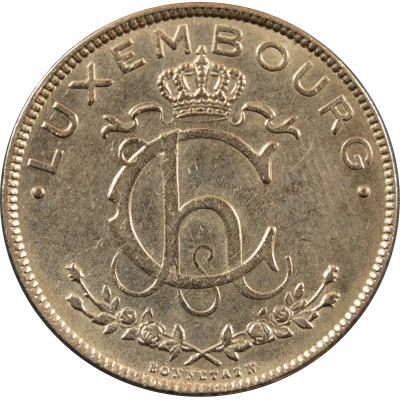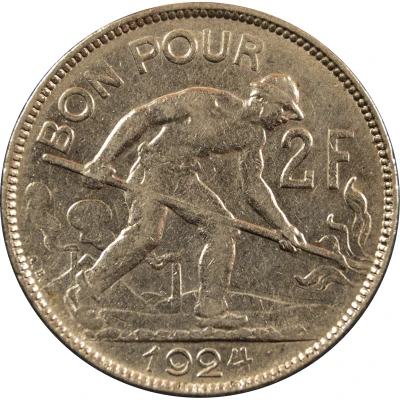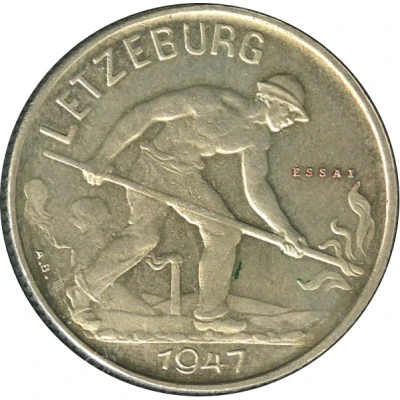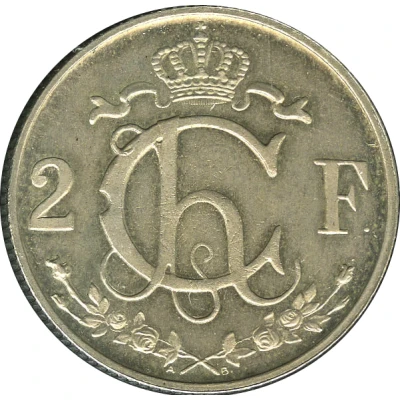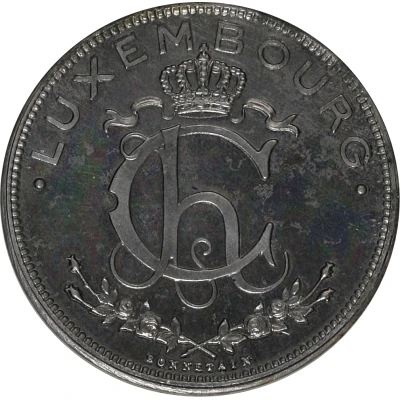
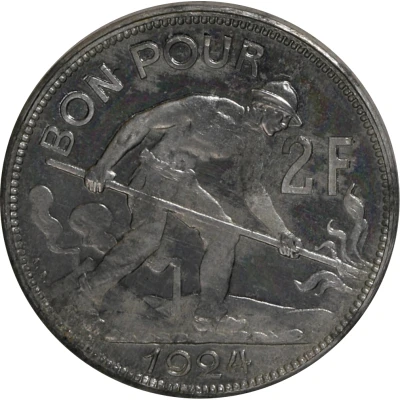

© Heritage Auctions
2 Francs - Charlotte Essai
1924 year| Aluminium | 2.8 g | 27 mm |
| Issuer | Grand Duchy of Luxembourg (Luxembourg) |
|---|---|
| Grand duchess | Charlotte (1919-1964) |
| Type | Pattern |
| Year | 1924 |
| Value | 2 Francs 2 LUF = USD 0.05 |
| Currency | Franc (1854-2001) |
| Composition | Aluminium |
| Weight | 2.8 g |
| Diameter | 27 mm |
| Shape | Round |
| Technique | Milled |
| Orientation | Coin alignment ↑↓ |
| Updated | 2024-10-06 |
| Numista | N#102901 |
|---|---|
| Rarity index | 92% |
Reverse
A puddler (Feierstëppler) at work, symbol of the Luxembourgish steel industry surrounded by legend, face value and vintage at the bottom. In the background blast furnaces and at 8 o'clock the initials of the engraver.
Script: Latin
Lettering:
BON POUR
2 F
1924
Engraver: Armand Bonnetain
Edge
Plain
Comment
Trial strikes exist in different variants:- Silver - 11 g. - plain edge - 100 pcs - L#360-1 / KM# -
- Copper - 9.15 g. - plain edge - 100 pcs - L#360-2 / KM#Pn35
- Copper - 8.8 g. - reeded edge - 50 pcs - word ESSAI on reverse - L#360-3 / KM# -
- Nickel - 10 g. - plain edge - 50 pcs - L#360-4 / KM# -
- Copper-Aluminium - 8 g. - plain edge - 50 pcs - L#360-5 / KM# -
- Copper-Aluminium - 8 - 8.75 g. - reeded edge - L#360-6 / KM# -
- Copper-Tin (bronze) - plain edge - L#360-7 / KM#Pn36
- Aluminium - 2.8 g. - plain edge - L#360-8 / KM# -
- Aluminium - 5.5 g. - Piéfort - L#360-9 / KM# -
- Similor - 9.6 g. - reeded edge - L#360-10 / KM# -
- Similor - 9.6 g. - plain edge - L#360-11 / KM# -
© Heritage Auctions © Maison Palombo
Interesting fact
One interesting fact about the Pattern 2 Francs - Charlotte (Essai) 1924 from Grand Duchy of Luxembourg (Luxembourg) made of Aluminium weighing 2.8 g is that it was designed by French sculptor and engraver, Charles Allou. Allou was a prominent artist during the early 20th century and his work can be found on various coins and medals from different countries. The coin's design features a portrait of Charlotte, Grand Duchess of Luxembourg, on the obverse, and the coat of arms of Luxembourg on the reverse. The use of aluminum as the material for the coin was also a unique choice at the time, as most coins were made of more traditional metals like gold, silver, or copper.
